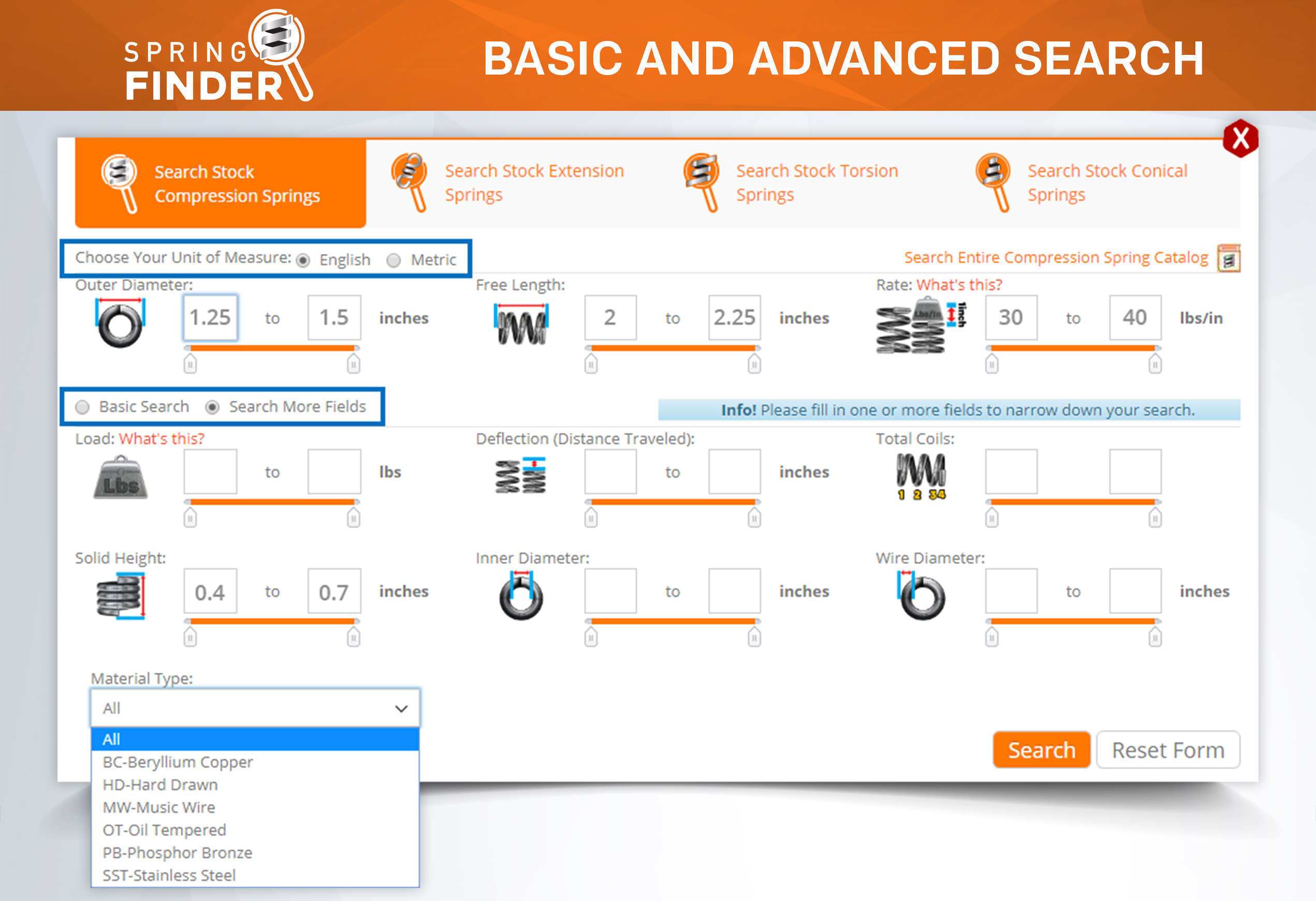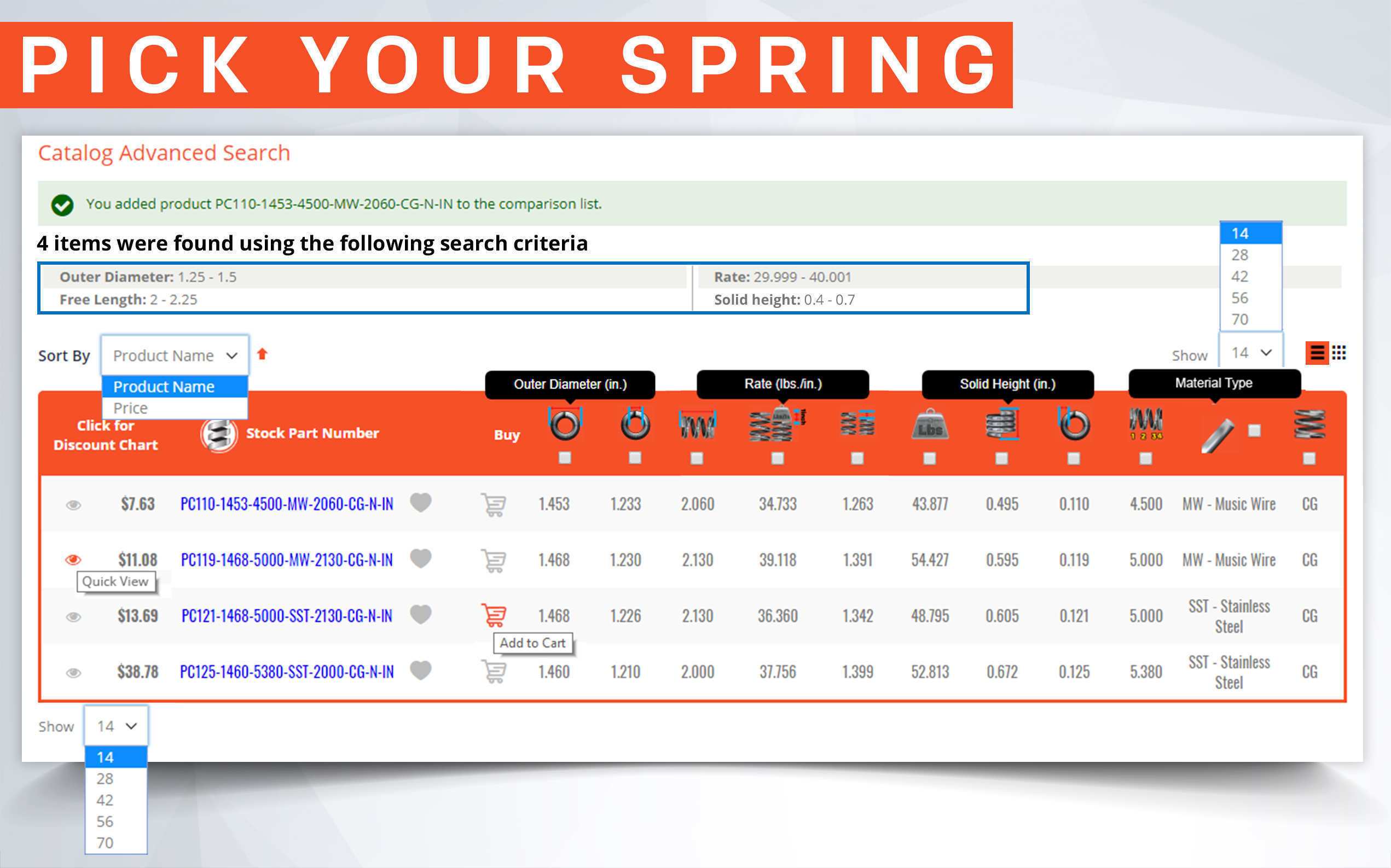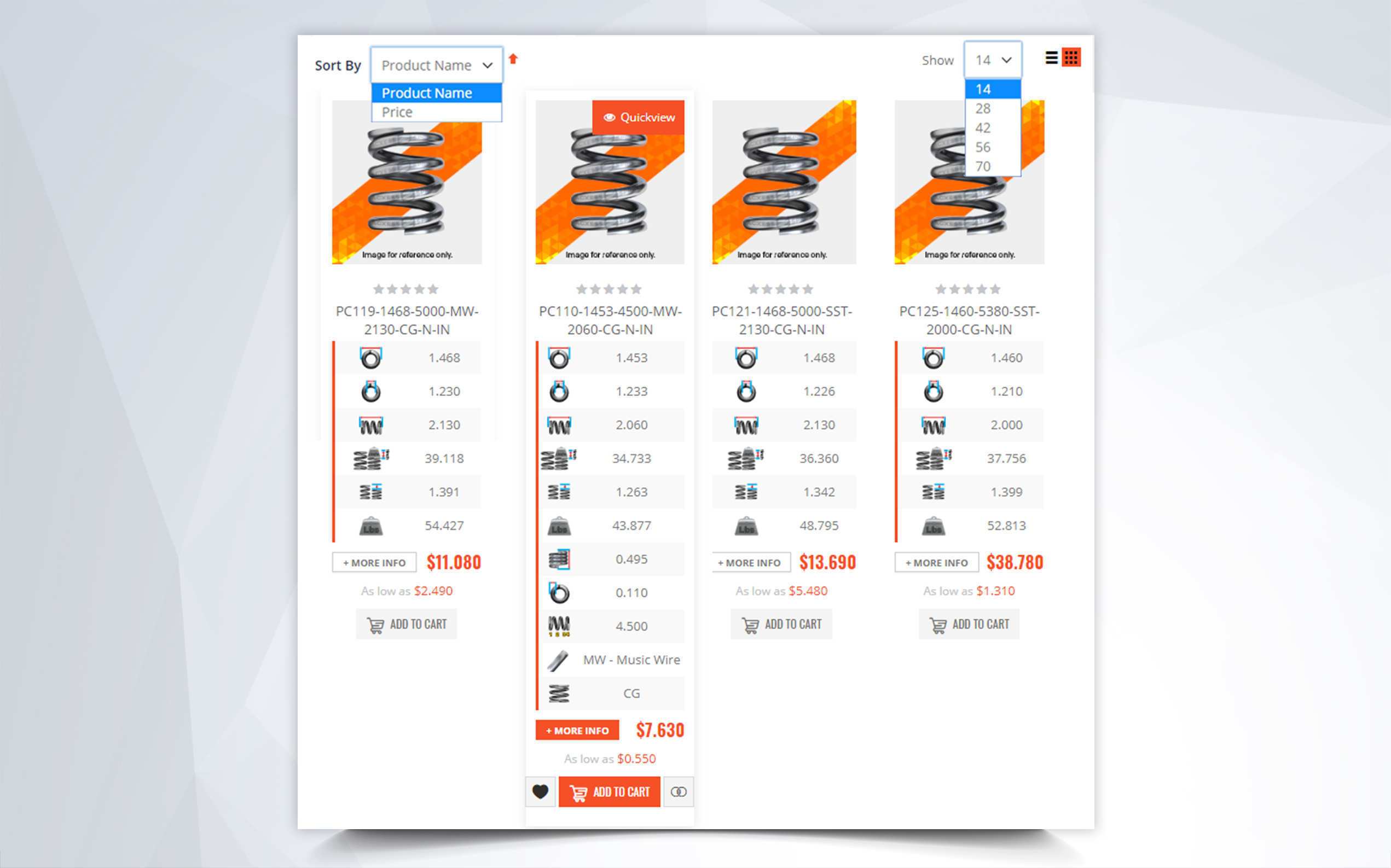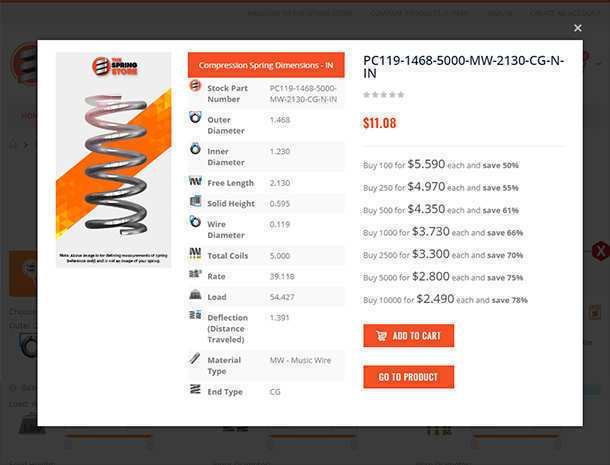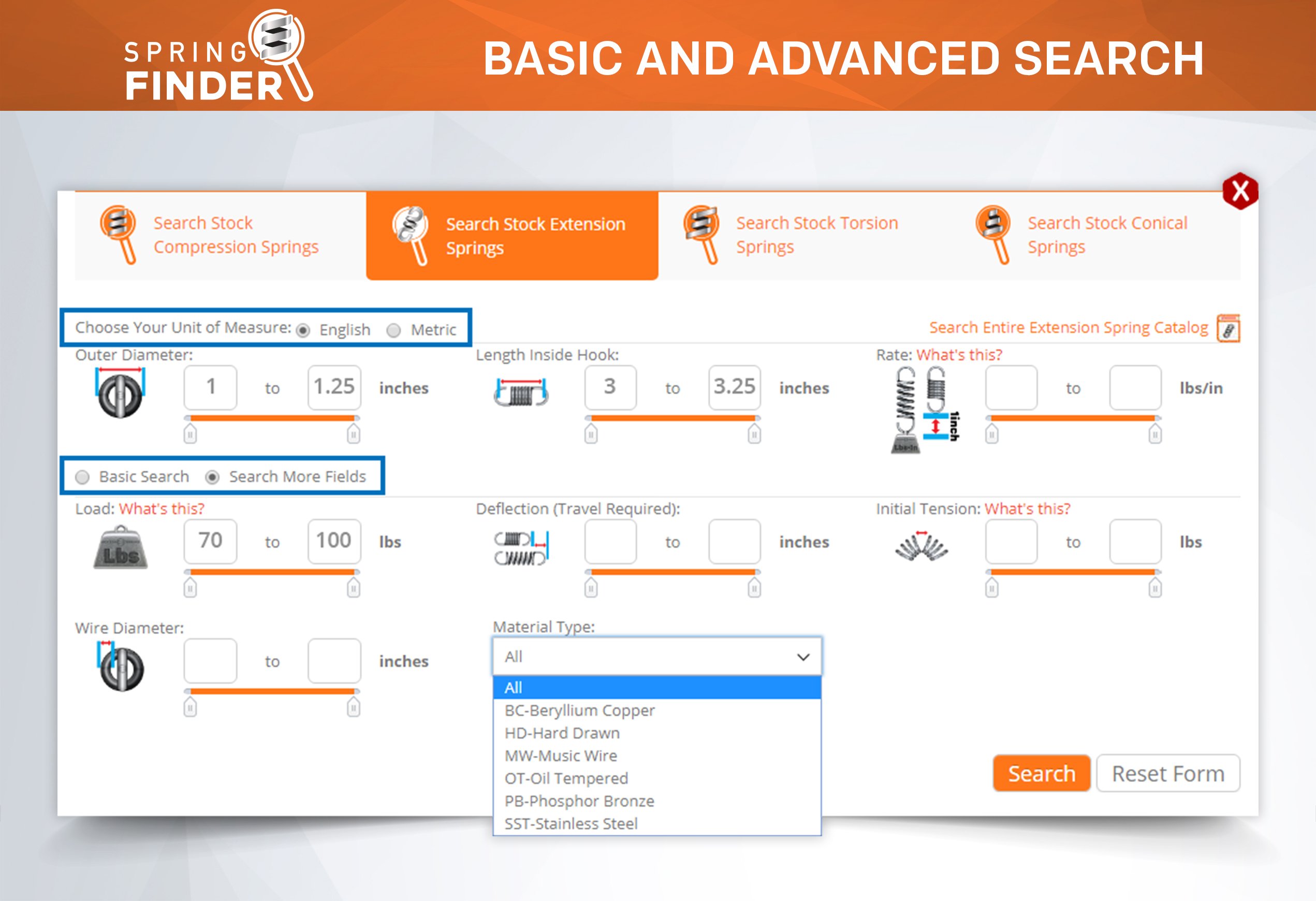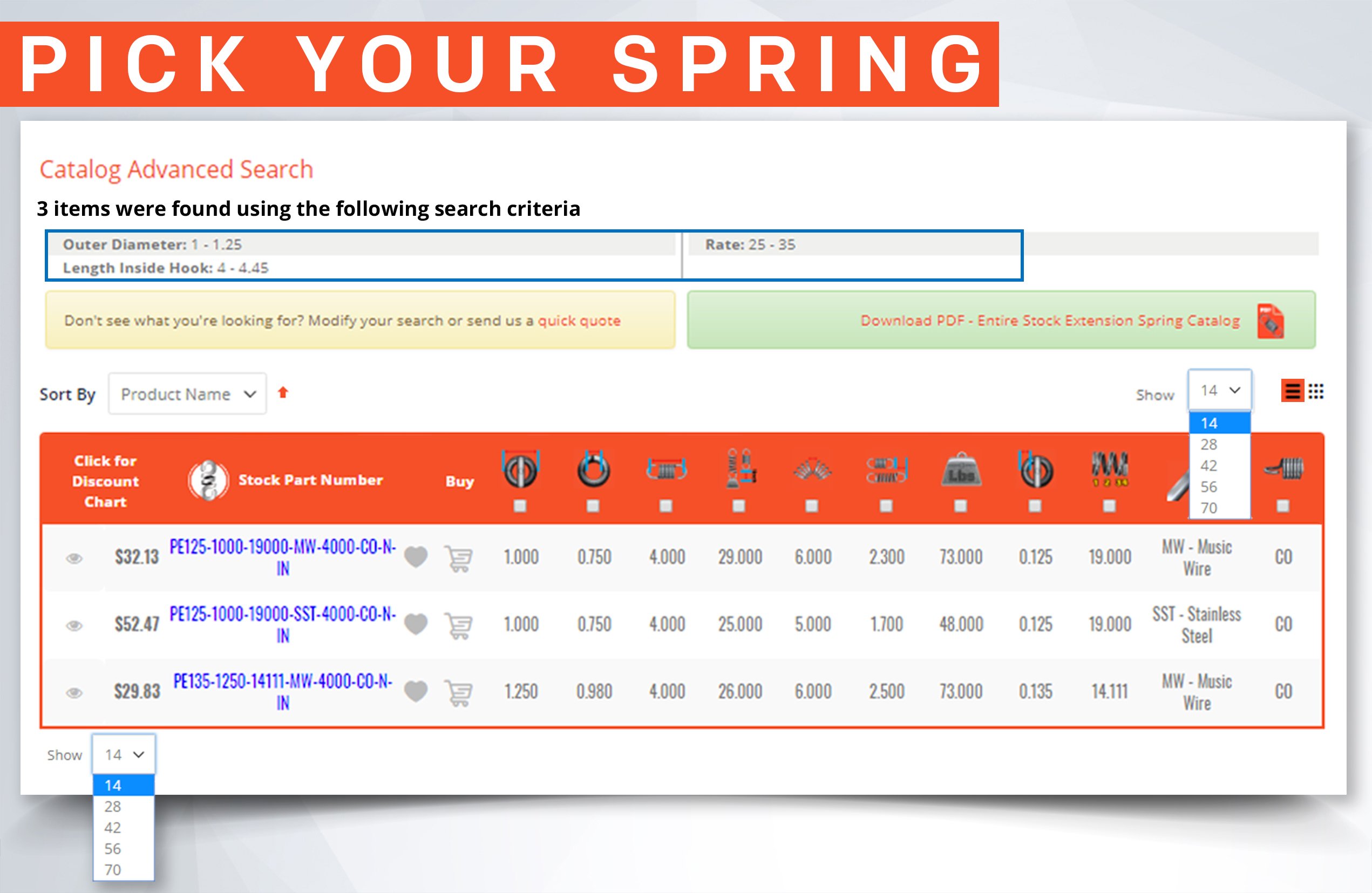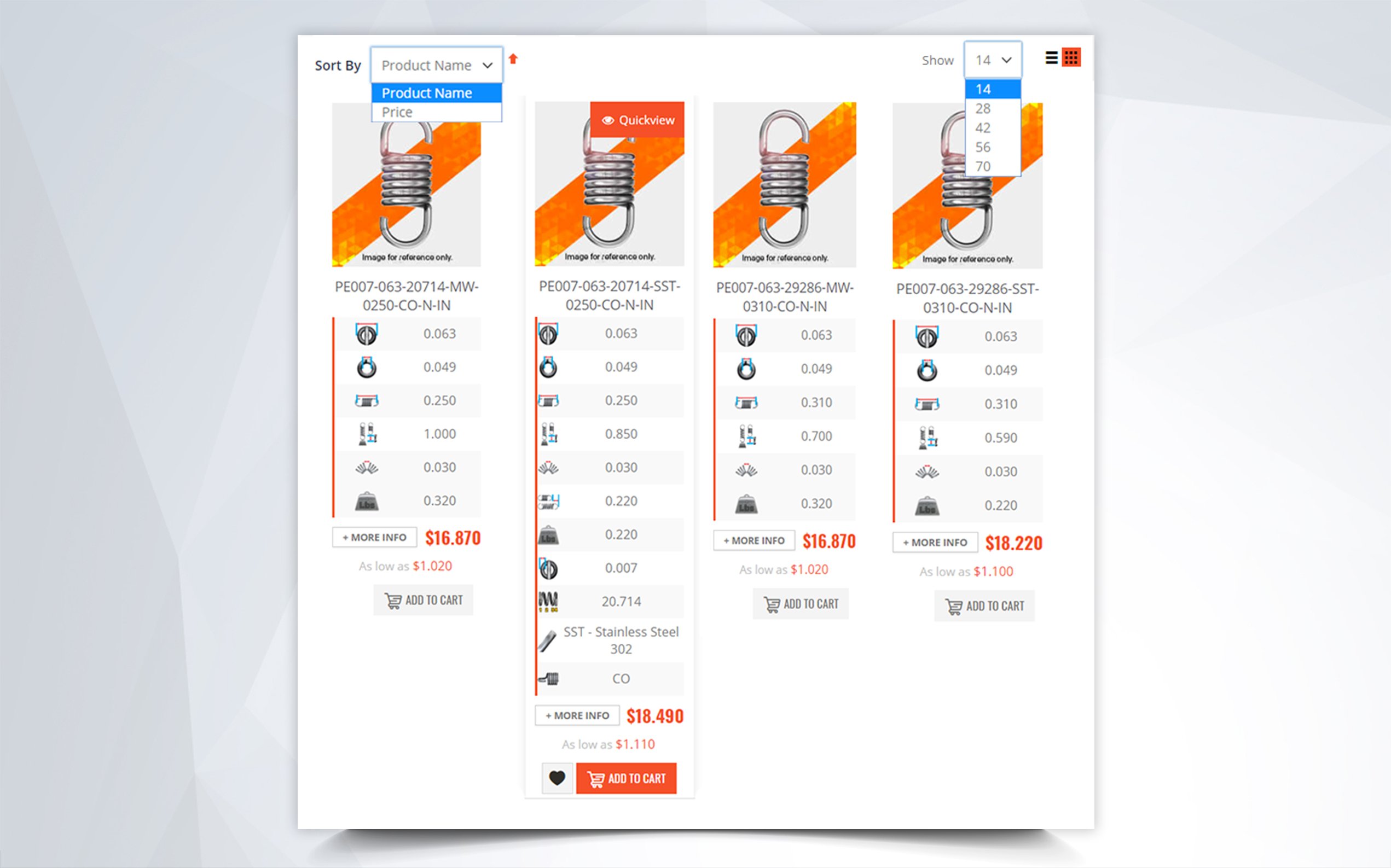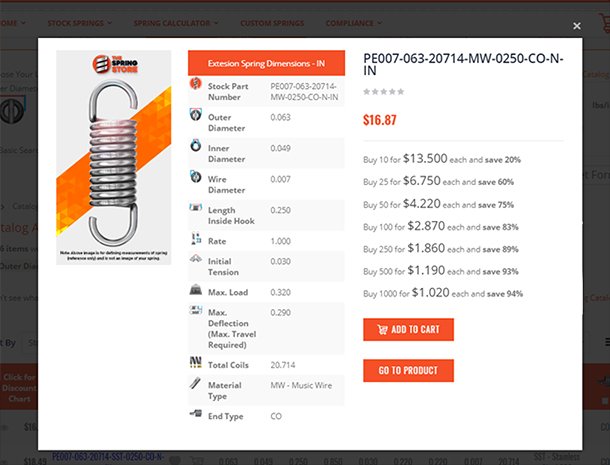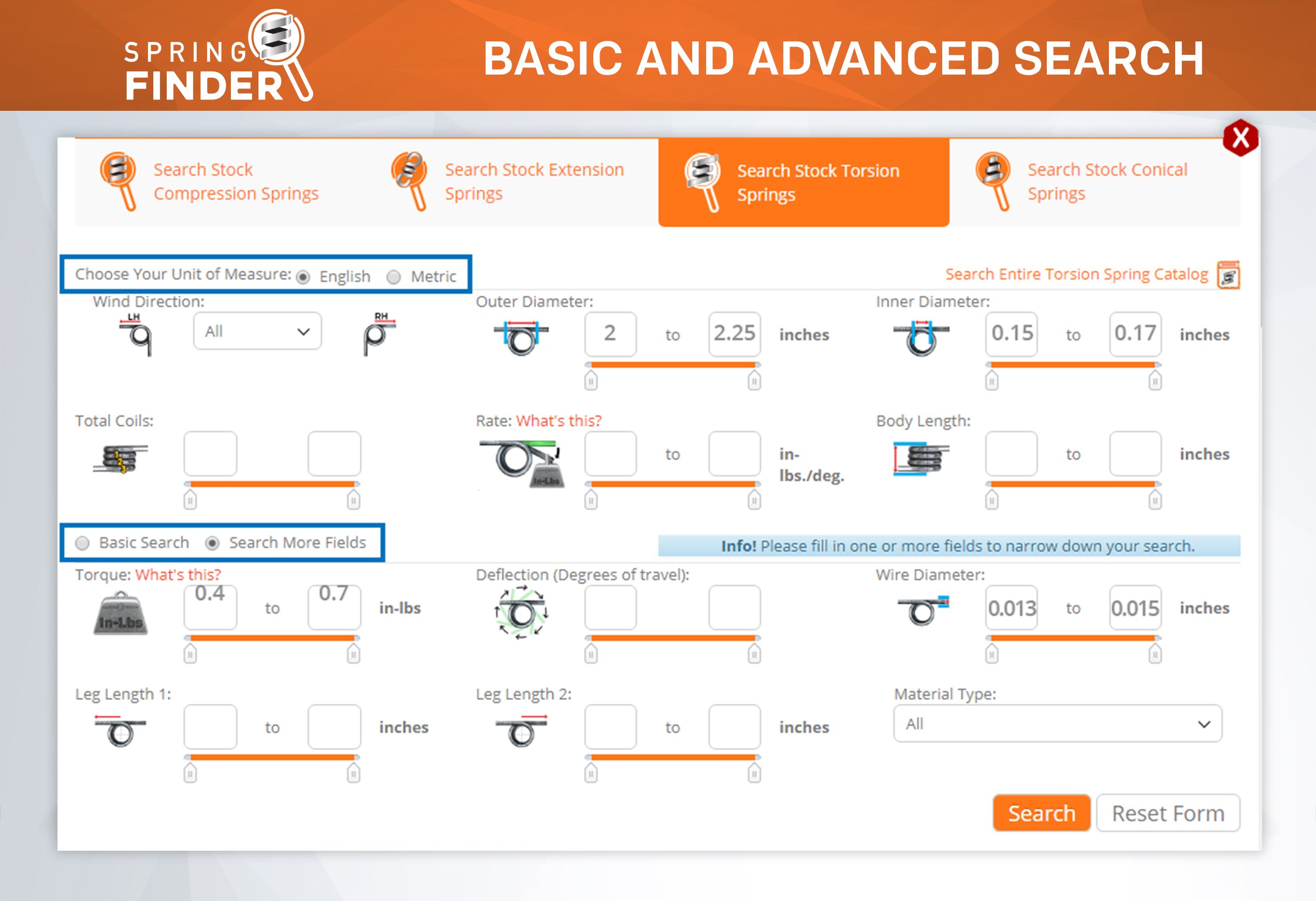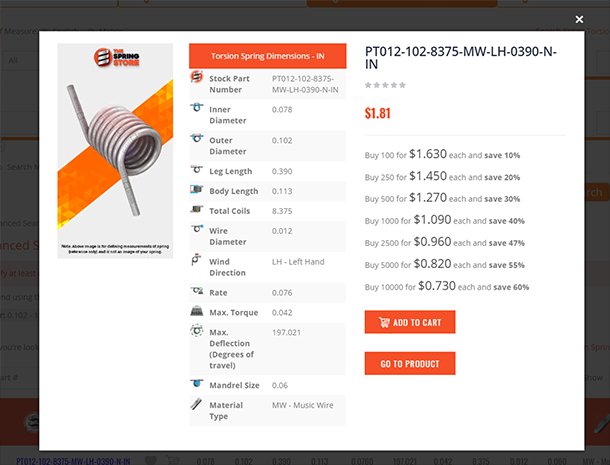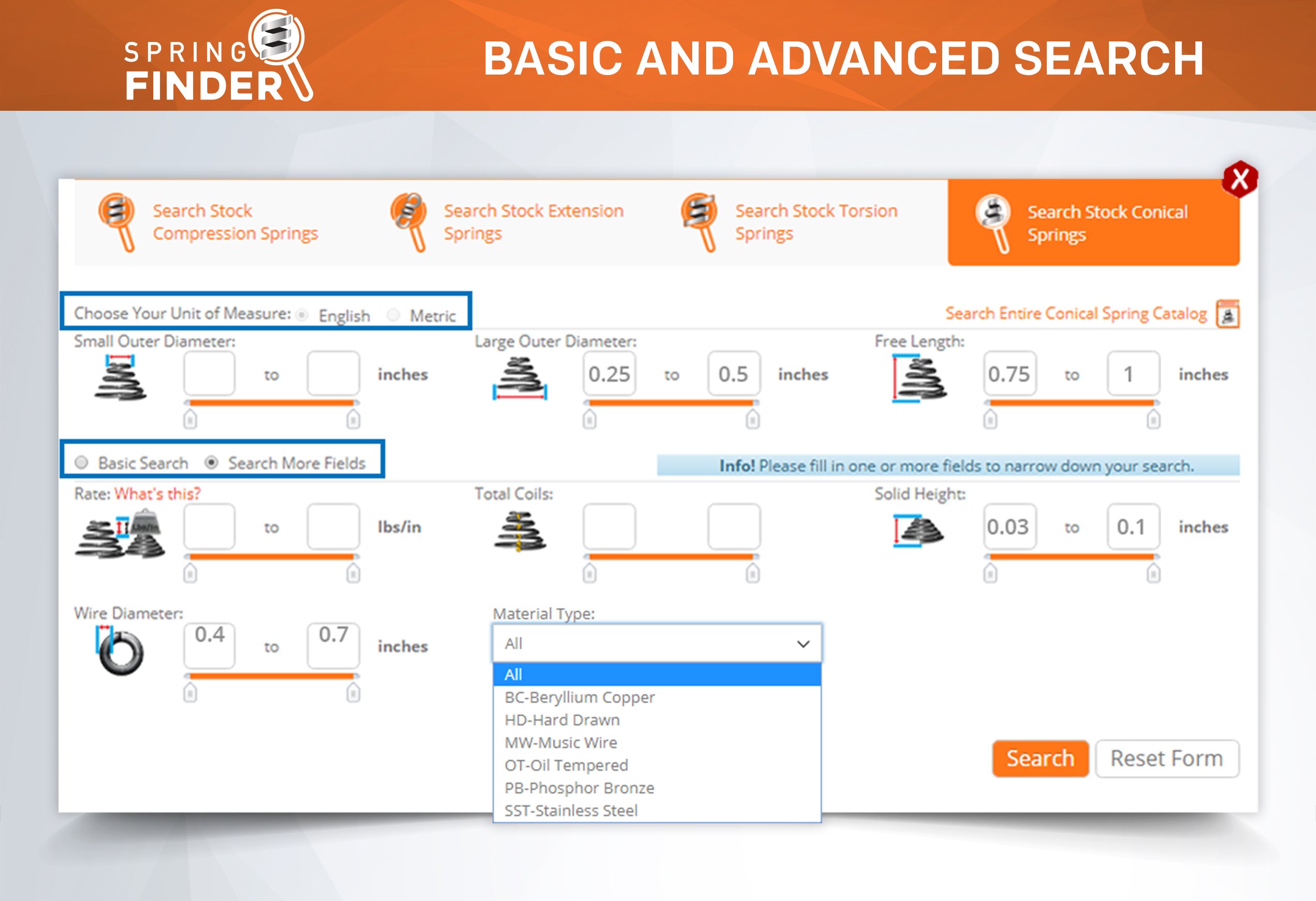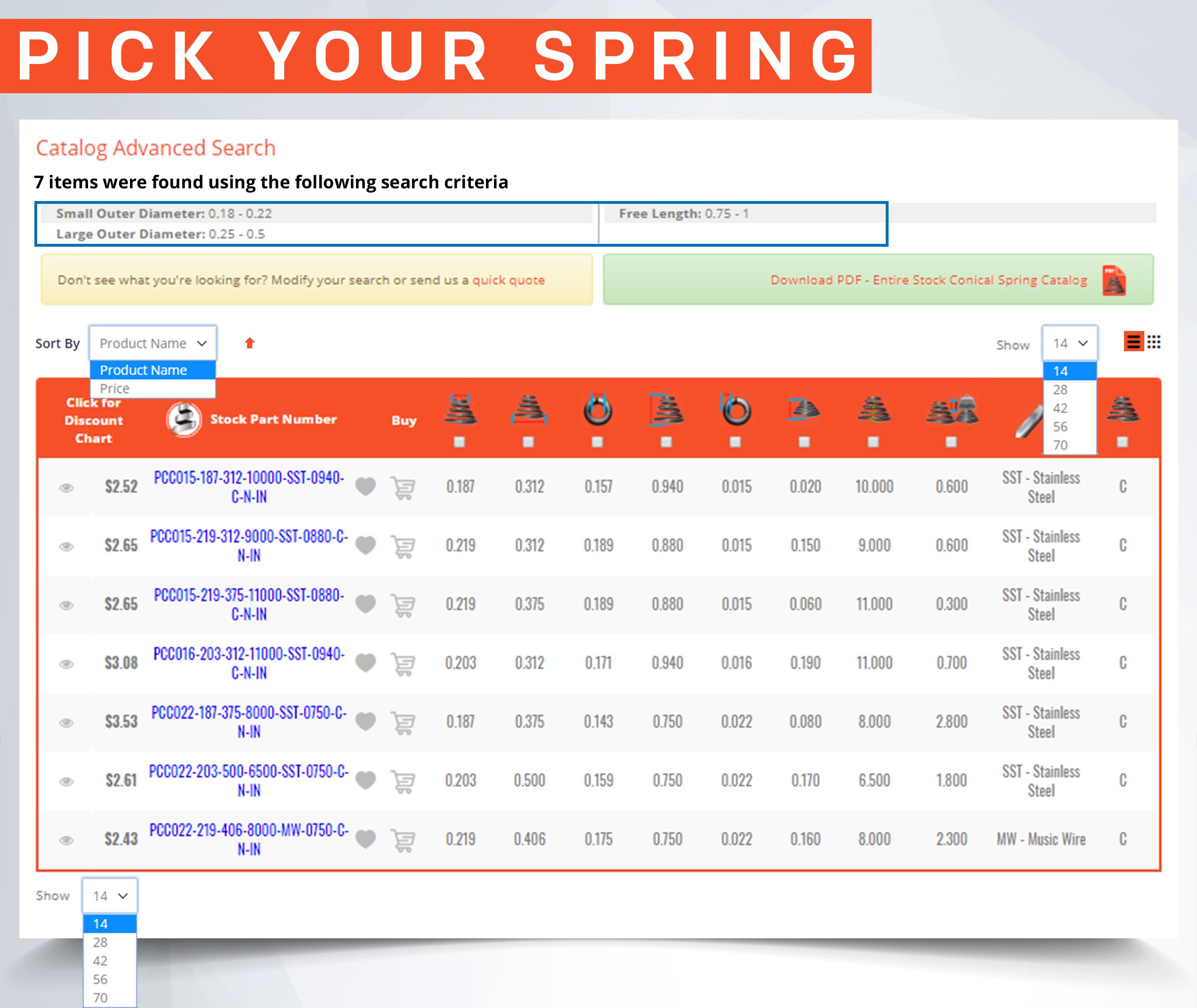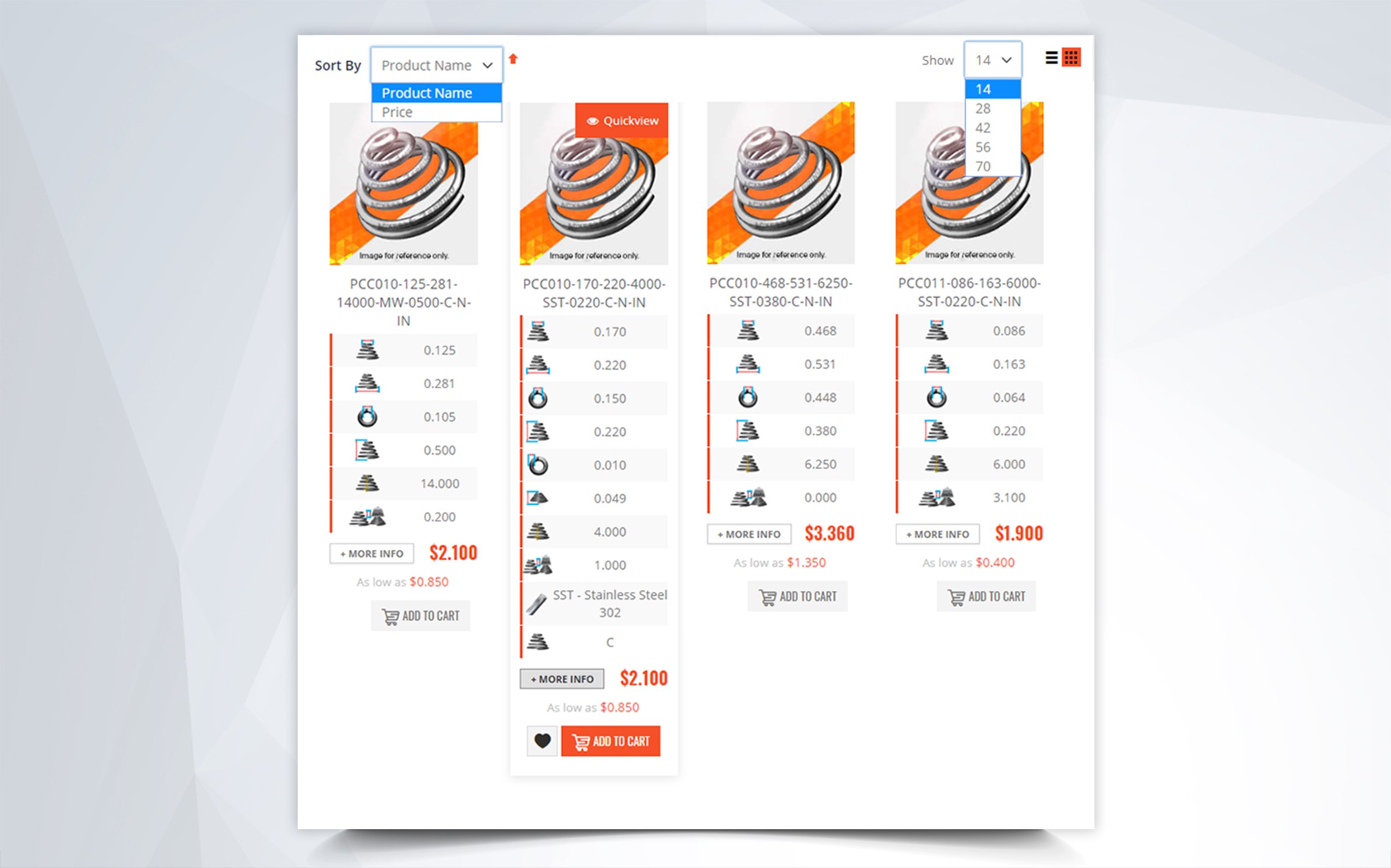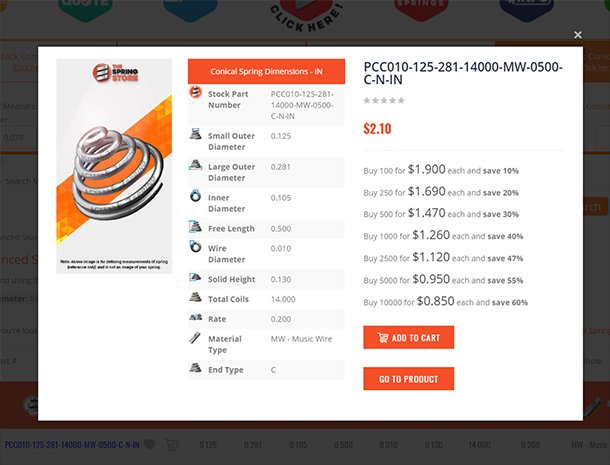Glossary of Spring Industry Terminology

Welcome to our glossary of coil spring terminology. Here you will find the meaning and definition of several terms used in the spring industry.
A
Active Coils (NA)
In a compression spring; they are the open coils within the body. If it has open ends, all the coils are active.
In an extension/torsion spring; all of the coils deflect under the load/torque.
Angular Relationship of Ends
The position the hooks have between each other.
B
Baking
The heat treatment of electroplated springs to release hydrogen embrittlement.
Barrel Spring
Spring with smaller coil diameters toward the ends thus giving it a barrel/concave shape.
Buckling
When a compression spring bends during deflection.
C
Closed Ends
Closed coils at the ends of a compression spring.
Closed and Ground Ends
When ends are ground so that the spring will be able to stand straight on a flat surface. This is done on closed ends only.
Closed Length
See solid height.
Close Wound
When a spring’s coils are wound to touch each other (Ex. extension and torsion springs).
Coils per Inch
See pitch.
Concave
See Barrel Spring.
Convex
See Hourglass Spring.
D
Deflection (x)
The action of a compression spring being compressed, an extension spring extending, and a torsional spring being torqued.
E
Elastic Limit
The limitation of a spring’s deflection due to high levels of stress.
Endurance Limit
See life cycle.
F
Free Angle / Position
The position of a torsional spring’s legs in its free, untorqued state.
Free Length (L)
The unloaded length of a compression spring.
Frequency
The rate of vibration coming off a spring when both ends are grasped/attached.
G
Gradient
See rate.
H
Heat Setting
Putting a spring under an elevated temperature to help it avoid losing force at the temperature it will be operating in.
Helical Spring
Term referring to spring with round/circular coils (i.e. compression springs).
Helix
Round, circular.
Hooke’s Law
Law of physics by Robert Hooke where the load is proportional to the deflection.
Hooks
The ends on an extension spring are bent out to form hooks. This allows them to grasp the two objects that will pull on it.
Hot Pressing
See heat setting.
Hourglass Spring
Spring with coil diameters that are larger toward the ends thus giving it an hourglass/convex shape.
Hydrogen Embrittlement
When springs become brittle due to hydrogen being absorbed in electroplating and become perceptible to to cracking and failure, especially under constant loads.
I
Inner Diameter
The measurement of the inside of a coil from side to side.
Initial Tension (Fi)
The force gathered in between an extension spring’s coils which makes them stay together in their free state.
L
Life Cycle / Cyclic Life
The amount of working cycles you can expect out of a spring given its limitations.
Load (F)
The weight of the object, or the force, being placed on the spring.
Loops
Also known as coils and referred to as hooks when the coils come off the body.
M
Mean Coil Diameter (D)
The coil diameter in between the outer diameter and the inner diameter.
Modulus in Shear / Torsion (G)
Coefficient of stiffness for compression and extension springs.
Modulus in Tension / Bending (E)
Coefficient of stiffness for torsion and flat springs. (Young’s Modulus)
Moment (M)
See torque.
N
Nesting
See telescope.
O
Open Ends
The last coils on the ends of a compression spring remain open-wound just like the ones in the rest of the body.
Open Ends Ground
Tip of wire on open ends is ground so it will stand better.
P
Passivating/Passivation
Stainless steel goes through this process by putting it through acid in order to remove impurities and increase corrosion resistance.
Permanent Set
This occurs when a spring is deflected past their elastic limit and maximum safe load. The spring will lose both force and memory thus not returning to its original length.
Pitch (p)
The distance between one coil and the other in open wound springs such as compression springs.
Poisson’s Ratio
The ratio of the strain in the transverse direction to the strain in the longitudinal direction.
Pre-Set
See Remove Set.
R
Rate
The change in load proportional to the change in deflection. Usually given in pounds per inch (lb/in) or Newtons per millimeter (N/mm).
Remove Set
The process of manufacturing a spring longer than the desired free length to then compress it down to solid height. All with the purpose of causing it to take a set and increasing its elasticity.
Residual Stress
Stress caused by shot peening, forming, cold working, set removal, etc. This type of stress may or may not be favorable.
S
Set
See Permanent Set.
Shot Peening
The process of a spring being cold-worked where the surface of the material is peened to cause compressive stress. Done to improve fatigue life.
Slenderness Ratio
The proportional ratio of a compression spring’s coil diameter and free length. It will determine if a spring will buckle or bend during deflection.
Solid Height
The height of a compression spring when it is fully compressed and all of the coils are touching.
Spring Index
The proportional ratio between a spring’s wire diameter and the coil diameter, determining the tightness of its coils.
Squared and Ground Ends
See Closed and Ground Ends.
Squared Ends
See Closed and Squared Ends.
Stress Relieve
To put springs through a low heat-treating process to relieve stress.
T
Telescope
The effect conical, convex, or concave springs make when their coils’ outer diameters compress into the next coils’ inner diameter thus reducing solid height.
Torque (M)
The action of twisting a torsional spring’s legs and coils under a radial force.
Total Number of Coils (N)
The total amount of coils that make up your spring, both active and inactive.
Travel
See Deflection.
W
Wahl Factor
A factor to correct stress in helical springs; effects of curvature and direct shear.
Wire Diameter
The measurement of the round wire thickness of which a spring is made of.





